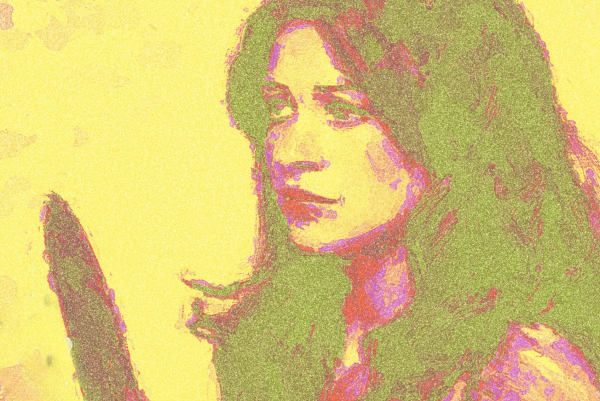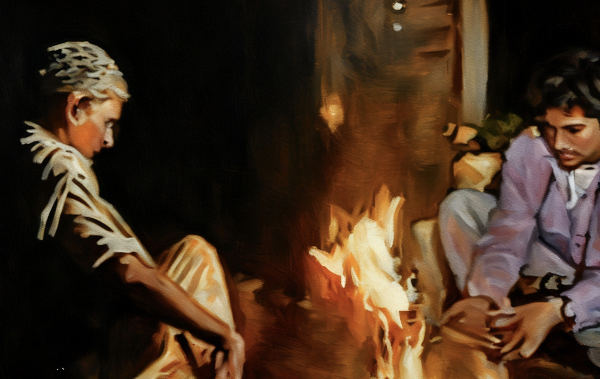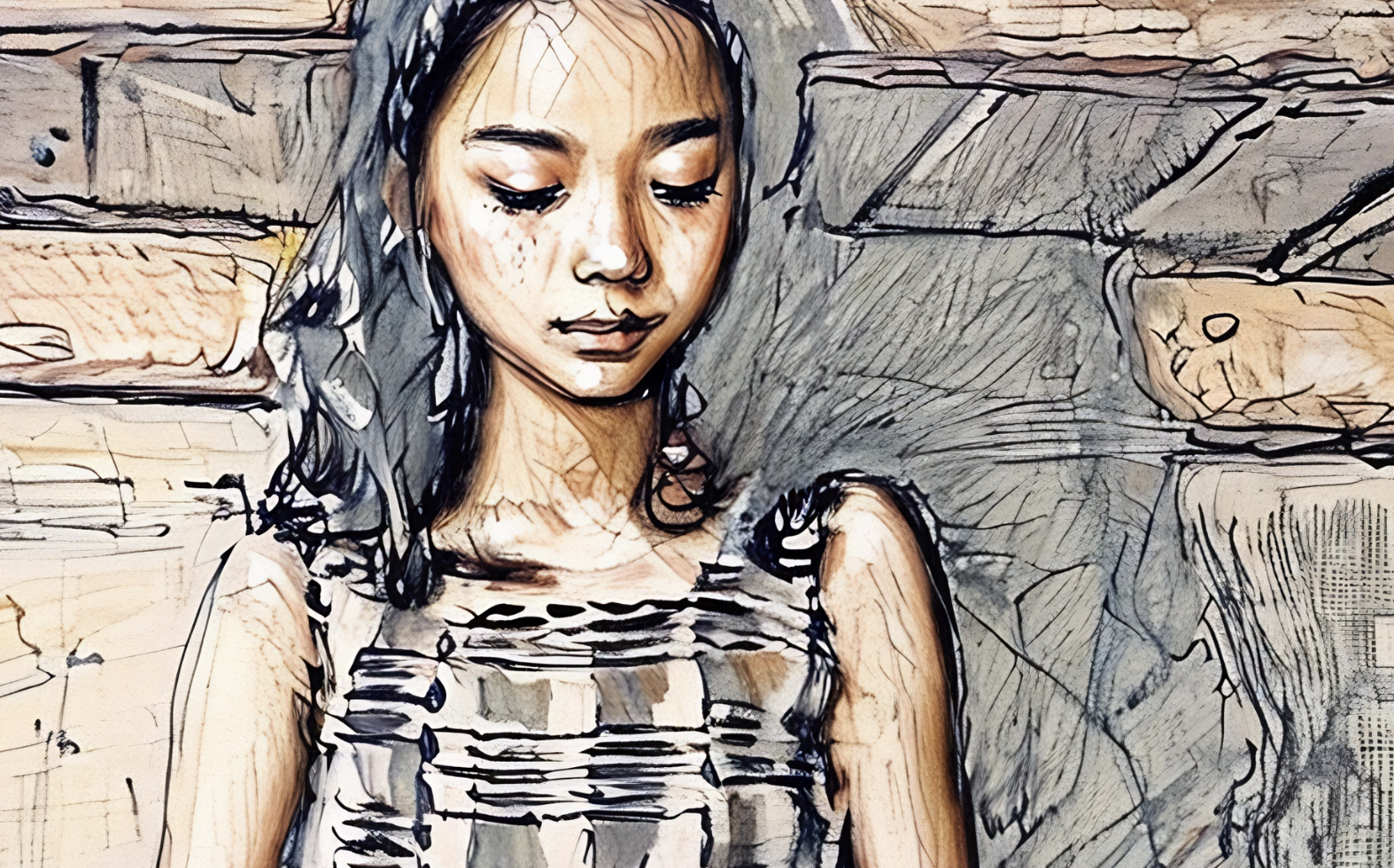The visual brilliance and lingering chill of Humayun Ahmed’s ‘Odekha Bhubon’
-689c4d4932e8a.JPG)
Humayun Ahmed’s favorite word was kuhok, a Bengali term that folds illusion, magic, charm and enchantment into a single breath.
He laced his fiction with it so thoroughly that you couldn’t help but believe in something you’d never seen but somehow felt must exist–probably just beyond the bend in the road, or in the shadow of your own house.
In Dhaka’s literary circles, Humayun has long been treated as a popular entertainer rather than a serious artist–“a chronicler of middle-class squabbles,” as one critic once put it, a phrase meant to exile him from the sanctum of “weighty literature.”
Yet that judgment misses the sly audacity of his craft. Here was the man who wrote the first science fiction stories in independent Bangladesh, who stitched together tales like patchwork quilts of mismatched fabric that somehow formed a seamless, dazzling whole.
You could never box a Humayun Ahmed story into a single genre. Horror, romance, psychological suspense, farce–they traded places mid-page, sometimes mid-sentence, without jarring the reader.
A tender love story might darken into something ominous; a domestic comedy might turn on the hinge of a chilling reveal. That restlessness for boundaries, that taste for what lies behind the curtain, was part of his magic.
Humyaun had an appetite for mystery and fear. Horror in his work was a quiet guest who might slip in through the kitchen door. In the 1990s, when Bangladeshi audiences were still in thrall to the gentle rhythms of tea-time family dramas, he startled the nation by slipping a ghost into the living room.
That apparition came in the form of Odekha Bhuban–“The Unseen World”--a television series he created and wrote.
Odekha Bhuban was less a conventional ghost story than a series of psychological fables steeped in a haunted atmosphere. Across eight episodes, each with its own plot and characters, Humyaun spun yarns that began in the ordinary: a neighbor’s visit, a conversation over tea, or a family dinner.
Five or ten minutes in, the air would shift. A word, a glance, a gesture, a door left ajar–and the story would twist, unspooling into something uncanny. By the end, you weren’t quite sure what you’d seen, only that you couldn’t stop watching.
For those who never read his novels, Odekha Bhuban offered a crash course in Humayun’s literary DNA–his instinct for pacing, his love of slow-burn revelation, and his refusal to honor the fences between genres.
Each episode stood alone, but together they revealed the contours of a writer who saw no contradiction between enchantment and fear, the everyday and the inexplicable.
It is of course tempting, when talking about Humyaun, to focus on his commercial reach–the millions of copies sold, and the TV dramas that stopped traffic in Dhaka. But to stop there is to miss the deeper current.
His work is a reminder that literature need not be neatly filed under “high” or “low” to matter. It can charm and unsettle, pull you into a room that feels familiar until you realize the furniture has shifted, and you are somewhere entirely new.
-689c4b040d8fb.png)
1: Bonur Golpo
The first tale in Odekha Bhuban opens like a folk song and darkens into something far more unsettling.
An archaeologist arrives in a village, setting up camp on the forest’s edge. By day, he wanders among moss-cloaked ruins; by night, he retreats to his tent. But he is not alone. Bonu, a village girl, is with him.
She is an object of fear here–whispered about, avoided. The villagers call her a witch, convinced she can summon harm with nothing more than her presence.
Bonu does have a gift, though it is not the cackling sorcery of their superstitions. She can coax music from a leaf, fashioning it into a flute whose tune unsettles the air itself. It is a sound so eerie that even the bravest avoid it.
When a death rattles the village, suspicion sharpens into fury. Torches flare in the night; voices rise in a single, dangerous chorus. They are hunting Bonu now, determined to punish her. What happens next is the kind of turn Humayun Ahmed excelled at–a shift in the atmosphere that changes the story entirely.
In Bonur Golpo, the fright is not born of blood or grotesque makeup. Shamima Nazneen, playing Bonu, doesn’t need festering wounds or crimson-streaked cheeks. Her tangled hair, her wide, unblinking stare, and an unnerving laugh do the work instead.
From start to finish, she holds the viewer in that tight, breathless space between belief and disbelief–the true territory of kuhok.
-689c4b316af9a.png)
2: Dityiojon
Dityiojon, the second episode, wears a more ordinary mask.
For most of its forty-two minutes, it is the portrait of a marriage shadowed by tragedy. A man, paralyzed for a decade after a car crash, lives in a wheelchair. His wife, Jori, loves him fiercely, but he clings to his own brokenness as if it were an identity, a strange kind of self-respect.
He recites poetry, listens to music, keeps a pistol at his side. Rain seeps into their home; time drips with it.
At first, you wonder where the supernatural element could possibly be hiding. The story feels almost bare–just two people, their love, their bitterness, their silences. But Humayun Ahmed was never one for straight lines.
He threads a quiet disquiet into the scenes, and by the end, the tale has folded into something unexpected, the way a shadow lengthens without your noticing.
Humayun Faridi, in the wheelchair, and Suborna Mustafa, on the sofa, give the drama its pulse.
In one moment–simple in staging, devastating in weight–Faridi asks, “You’ll be with me until I die, won’t you?” The line lands like an anchor. It isn’t only the tragedy of the characters; it is the awareness that such love, and such loneliness, can exist side by side in real life.
The ending leaves you not frightened in the traditional sense, but hollowed out, haunted in a quieter way.
-689c4b651f528.png)
3: Neel Churi
The third episode, Neel Churi, begins in daylight–the safest of settings.
She is a doctor, the new bride of a Maulvi’s son, and she has returned with him to his village home. Curious neighbors crowd to see her, their chatter and laughter drifting through the yard. But by nightfall, silence takes hold. The road empties. People avert their eyes.
She notices it first as an absence–no footsteps after dark, no children playing nearby–until something fills the void. A flicker at the window. A veiled woman in full bridal attire, her round face pale in the dim light, wrists jangling with blue bangles.
The apparition lingers, always peering in, always watching.
The story never shouts its horror. There are no shrieks, no monstrous figures leaping from shadows. Instead, Humayun Ahmed wraps the dread in quiet repetition–a face, a window, an empty wall, the sound of glass on a glass table.
By the time the ending arrives, it isn’t just fear you feel. It’s a deeper ache, because Humyaun’s ghosts rarely stay ghosts. They dissolve into something else–longing, craving, emptiness, loss, a love that has slipped beyond reach.
Mahfuz Ahmed and Tajin Ahmed inhabit this story with an understated grief that makes its final moments all the more haunting.
-689c4be339b85.png)
4: Joitori
If Neel Churi is a study in quiet fear, Joitori feels like a pastoral lullaby–until it isn’t.
A young artist, shy to the point of self-erasure, arrives in a village to paint. The old man hosting him treats him like kin, plucking coconuts from the trees, setting nets in the pond, serving delicate pithas. It is an almost embarrassingly tender welcome.
But the old man’s daughter, Joitori, is another matter. Eccentric, they say. Cursed, they whisper– three fiancés, all dead before the wedding. She slips into the artist’s room at night.
Her voice carries the weight of something both fragile and strange. He falls in love, almost against his will.
For most of its running time, Joitori is deceptively simple–a love story in Humayun’s signature style, tender and faintly melancholic. The twist, when it comes, does not betray that tenderness; it deepens it.
Those familiar with Humayun’s rhythms may guess it before the reveal, but that does not blunt its effect. Some stories haunt because they end in loss. Joitori lingers because it ends in sweetness–the rare kind that feels earned.
In a series thick with sorrow, this is the one that leaves a trace of warmth long after the credits fade.
-689c4c5d6dcef.png)
5: Mrityur Opare
Nazmul is the sort of man you might not notice twice–polite, almost self-effacing, strolling down the street with a small clutch of roses. It’s his birthday.
He scatters a few flowers on the roadside, settles onto a park bench, and hums along to Rabindra Sangeet. It’s the kind of scene you’d pass without a second thought, serene to the point of invisibility.
And then, the trapdoor opens. This gentle, unassuming man has decided that before the day ends, he will kill his wife. Not in a fit of rage. Not in some fevered burst of impulse. Coldly. Methodically. With poison.
From that moment, Mrityur Opare becomes an exercise in suffocation–forty-six minutes that feel like you are trapped in a small, windowless room as the oxygen quietly drains away.
Asaduzzaman Noor and Afsana Mimi carry the drama almost entirely from within a single room, the air between them thick with a love so palpable it makes the violence looming over it feel obscene.
Humayun Ahmed refuses the easy release of a tidy twist; instead, he leaves the question–Why would a man who so clearly loves his wife choose to end her life?-- gnawing at you long after the credits roll.
This is horror without the cheap tricks, a study of how the people we think we know best can be foreign territory–and how intimacy itself can be the most dangerous weapon.

6: Churi
Meera’s husband is a man of quiet gestures–a bunch of flowers one day, a small trinket the next.
One day, he comes home with roses and a box of knives: sleek, and unnervingly beautiful. Meera picks one up, admiring its edge the way someone might turn a seashell in their hand, unaware of the deep tide it conceals.
At precisely 1 a.m., the doorbell rings. A stranger stands there–Yasin, who claims to be a friend of Meera’s uncle. His smile feels studied, his courtesy a shade too practiced.
Over tea, he begins telling a story about Meera. A disturbing one. The lights go out. A heartbeat of darkness–and suddenly, we’re back where we started. The clock now reads ten minutes to one.
We are caught in a time loop. Humyaun stages it like a pressure-cooker–just two actors, Zahid Hasan and Tanveen Sweety, and the suffocating intimacy of a single set. With each loop, reality frays further, like a record needle skipping over the same bar of music, each pass more distorted than the last.
By the end, the question isn’t whether the loop will end–it’s whether you’re ready for what happens if it does.

7: Agun Majid
In the briefest of the Odekha Bhuban stories, a journalist arrives in a remote village chasing a rumor that sounds more like a campfire tale than a news lead.
The man he seeks is known only as “Agun Majid” (Fire Majid). The locals say he can ignite anything simply by looking at it. Children hide at the sight of him. Dogs bolt. Chickens scatter in blind panic.
The journalist’s pursuit is less investigative than existential: he wants to see if the legend holds.
What he finds is not so much an answer as a flare–a flash of light and heat that’s gone almost as soon as it arrives. At just twenty-four minutes, the story feels like a match struck in the dark: brief, brilliant, and gone, leaving only the faint scent of smoke.
Mahfuz Ahmed and Nazmul Huda Bachchu deliver performances that give the myth some gravity, but you can’t help wishing the story had room to grow.
Still, in its quick burn, it captures one of Humyaun’s greatest strengths–his ability to take something absurd on its face and make it just plausible enough to haunt you.

8: Madina
The last tale in Odekha Bhuban begins like a pastoral retreat.
A writer arrives in a quiet village and is put up at the chairman’s house. The chairman is gracious to a fault– smoothing over every inconvenience, making sure meals arrive on time, even producing red wine in a place where such a thing feels faintly illicit.
His hospitality is almost performative, but there’s no mistaking its sincerity.
The only wrinkle is Madina.
She is his adopted daughter, though he rarely calls her that. In truth, he seems unable to stand the girl. So does the rest of the village. Not out of cruelty, but out of fear–the kind that creeps in at the edges of a smile, the kind people don’t talk about until the lights are out.
Madina, they whisper, has a history. Something happened. No one says what.
When she appears, played by the young Nisha, she is a vision: delicate frame, hair loose, eyes that look both innocent and knowing. The camera doesn’t need to tell you she’s beautiful–the village’s unease makes it clear.
The performances surrounding her–Amirul Haque Chowdhury as the watchful chairman, Ataur Rahman as the outsider-writer, Shamima Nazneen as the weary mother– give the story its texture.
Humayun Ahmed directs it with the unhurried confidence of someone who knows suspense thrives in stillness. He doesn’t rush to answer the question of who Madina really is or why she unsettles an entire community.
He lets it hang there, the way Tagore once wrote: “Forever these mysteries are silent, with sealed lips. In the new dawn of another life, perhaps it finds its answer within itself.”
It’s a fitting close to the series–a story about the impossibility of truly knowing another person, even when they sit across from you at dinner.
For me, Humayun Ahmed was the first door into the world of storytelling. His name threads through my past, present, and future, stitched into every line I’ve ever tried to write.
We will keep dissecting this “Odekha Bhuban” of Humyaun Ahmed, keep wondering why Himu walks, keep asking who was missing in Kothao Keu Nei.
People die. Stories don’t. Mysteries least of all. And the vast, shimmering world he built will remain, as untouchable and enduring as Madina herself.
—
Shakhawat Hossen is a writer
(Translated from Bangla by Faisal Mahmud)

